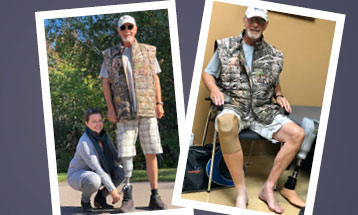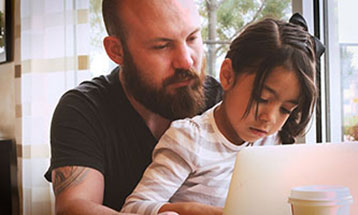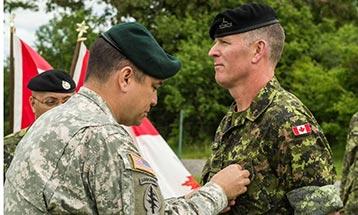Canadian Armed Forces Veteran Jerry Rideout served 30 years stationed across the country. He loved his military career, but a foot injury during his second peacekeeping tour in the Golan Heights in 2000 led to the loss of his right leg, and eventually, his medical release.
The retired Warrant Officer went directly from the Middle East to a NATO position at the US Naval base in Norfolk, Virginia when a doctor in the naval hospital told him the news that would change his life: he was facing amputation.
Soon after the amputation, he began wearing a prosthetic leg.
One of the most challenging parts of living with a prosthesis was taking it off and balancing on one leg for his morning shower.

Today, the 67-year-old retired Warrant Officer’s quality of life has drastically improved with three new specially-designed and medically-advanced prosthetic legs (including a waterproof one) to choose from.
“The first shower I had on two legs lasted more than an hour,” Rideout said.
“Boy, until you’ve done without, you don’t know how good that is.”
Rideout is one of Prosthetist Kirsten Simonsen’s many Veteran clients at her Eastern Prosthetic Clinic in Moncton, New Brunswick.
Simonsen’s reputation as one of the best in Canada was part of the reason Rideout chose to relocate to the Moncton area when he was medically released from the military.
Simonsen excels at what she does because she understands life with a prosthetic. She was born without many of the bones in her right foot.
She decided her career path at age 14, while walking across her school stage to accept an award in a skirt and an orthopedic boot.
“I became a prosthetist because I was envisioning something more,” she said.
She loves working with Veterans because of the experiences that lead them to her clinic.
“[Members of the] military are trained to take chaos and put discipline around it to create structure and control,” Simonsen said.
“The faster I can give them the info and help them control the chaos, the better.”
One of the more recent and significant advances is the microprocessor-controlled knee joint which increases stability, safety and function by adjusting to each person’s unique gait.
“In my 31 years, I have gone from a rubber foot to a computerized foot with knees that think like nervous systems and can recognize terrain changes with reflexive movements,” she said.
She’s worked with Veterans Affairs Canada to help Veterans get the best possible prosthetics for their particular needs.
In the early 2000s, Simonsen was the first prosthetist to put a microprocessor knee on an 80-year-old Second World War Veteran.
The Veteran had lost his leg on D-Day and spend five decades with a very rudimentary prosthetic. The day he visited her clinic, Simonsen’s office manager, Kelly, let him “test drive” a high-tech prosthetic leg with a microprocessor knee.
“He walked the parallel bars in my office, walked out the doors, across the parking lot and right into the woods, I couldn’t catch him,” she remembered with a laugh.
He came back in and said “I’ll take it!”
After successfully applying for authorization from Veteran’s Affairs Canada the D-Day Veteran soon had his own brand-new prosthetic.
“Those guys were so tough, they did so much for us. It felt like a miracle to let him experience that technology,” Simonsen happily recalls.
Meanwhile, modern-day Veteran Jerry Rideout is the proud owner of three artificial right legs; the waterproof one he loves for long showers, the one he uses to keep his golf handicap between 12 and 14, and the leg he uses for everyday activities.
He visits Simonsen at her clinic a few times a month for tune-ups and check-ins. “She’s a real MacGyver, she’s helped keep me going strong. I wear my Veterans’ plates very proudly.”
Our goal at Veterans Affairs Canada is to help Veterans meet their needs and maximize their quality of life. Learn more about what we can offer you by checking out our Rehabilitation Services and Disability Benefits.




